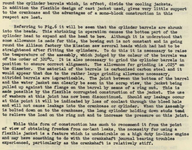Reluctant Poster
Tech Sergeant
- 1,745
- Dec 6, 2006
Nonsensical Packard did not redesign the Merlin, they merely redrew it to American conventions. There have been plenty of discussions in this forum debunking this myth. Show us your comparative data for speed, cost and maintenanceYes, they did laboriously hand lap the surfaces, and they were oil tight - only once.
As soon as they got out in the field and mechanics did what mechanics do, open up this hand fitted faces regularly, lever open faces with screwdrivers, they leaked like sieves for ever more.
It was a basic failing - Rolls Royce were not production engineering the engines as a mass market commodity.
Packard engineers took one look at a Merlin, burst out laughing and redesigned it like a car engine. Gang milled every surface and chucked a paper gasket in it, built them much faster, much cheaper and much easier to maintain.

